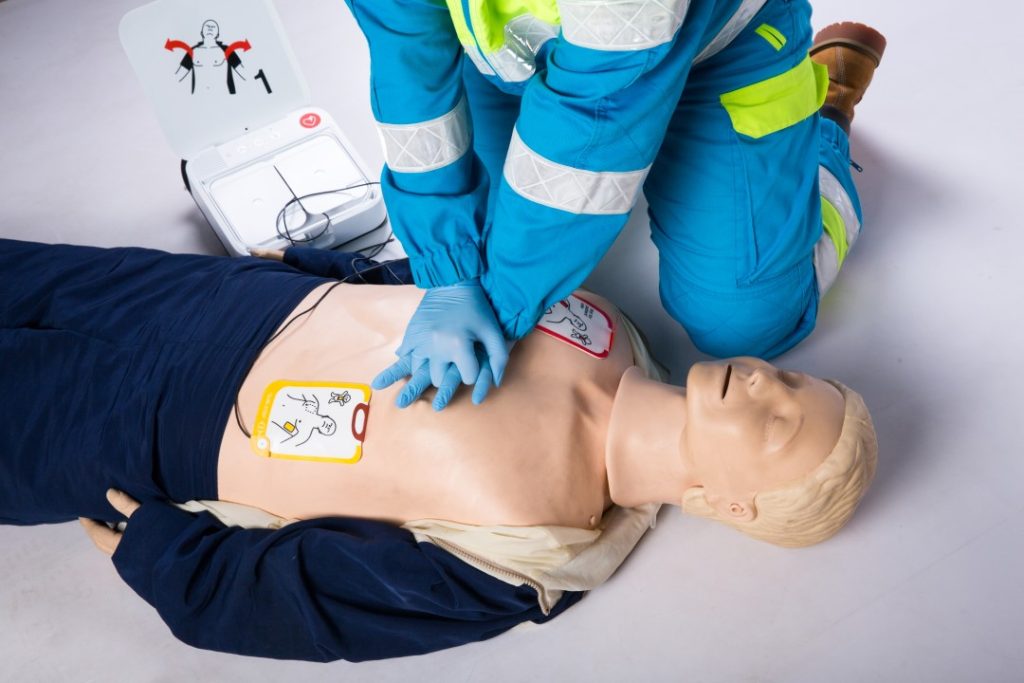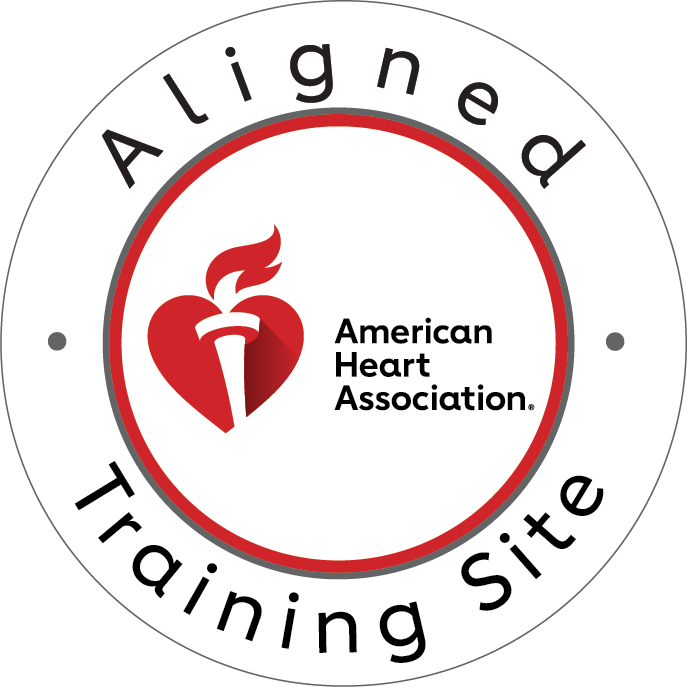When cardiac arrest strikes, every second counts. The compression-to-ventilation ratio you choose during CPR can dramatically impact survival outcomes. Should you perform 15 compressions followed by 2 breaths, or stick with the standard 30:2 ratio? This critical decision affects blood flow, oxygen delivery, and ultimately, whether a patient survives.
Understanding the science behind these ratios empowers healthcare providers and trained rescuers to make informed decisions. Real-time feedback during CPR training reveals significant differences in how these ratios perform under various circumstances.
Understanding CPR Compression Ratios: The Foundation of Life-Saving Care
CPR compression ratios represent the relationship between chest compressions and rescue breaths delivered during resuscitation efforts. The 30:2 ratio means performing 30 chest compressions followed by 2 rescue breaths, while the 15:2 ratio involves 15 compressions followed by 2 breaths.
These ratios aren’t arbitrary numbers. They’re carefully calculated based on extensive research into cardiac physiology, blood circulation, and oxygen transport mechanisms. Moreover, real-time feedback from CPR devices consistently shows how different ratios affect perfusion pressure and coronary blood flow.
The American Heart Association’s current guidelines primarily recommend 30:2 for single rescuers. However, specific situations call for the 15:2 approach, particularly in two-rescuer scenarios involving pediatric patients or when advanced airway management is available.
The Science Behind 30:2 Compression Ratios: Maximizing Blood Flow
The 30:2 compression ratio emerged from decade-long studies examining optimal blood circulation during cardiac arrest. Research demonstrates that longer compression sequences maintain higher coronary perfusion pressure, which is crucial for successful resuscitation.
When you perform continuous chest compressions, each compression builds pressure within the cardiovascular system. Interrupting compressions for ventilation causes this pressure to drop significantly. Therefore, minimizing interruptions through extended compression sequences improves blood flow to vital organs.
Studies using real-time feedback systems reveal that 30:2 ratios generate approximately 15% higher coronary perfusion pressure compared to shorter sequences. This improvement translates directly into better survival rates, especially during the critical first minutes of cardiac arrest.
Furthermore, the 30:2 ratio reduces rescuer fatigue in single-person CPR scenarios. Fewer interruptions mean less mental switching between tasks, allowing rescuers to maintain consistent compression quality for longer periods.
When 15:2 Compression Ratios Excel: Specialized Scenarios
Despite the widespread adoption of 30:2 ratios, the 15:2 approach offers distinct advantages in specific circumstances. Two-rescuer CPR scenarios benefit significantly from this ratio, particularly when one rescuer manages the airway while another performs compressions.
In pediatric emergencies, the 15:2 ratio often proves superior. Children’s physiology differs from adults’ in several key ways. Their smaller blood volume and higher oxygen consumption rates mean they benefit from more frequent ventilation. Real-time feedback during pediatric CPR training consistently shows improved outcomes with 15:2 ratios.
Advanced life support scenarios also favor 15:2 ratios when healthcare providers have established advanced airways. With endotracheal tubes or supraglottic devices in place, ventilation becomes more efficient, making frequent breathing cycles more practical and effective.
Hospital settings with multiple trained responders can implement 15:2 ratios more effectively than single-rescuer situations. The coordination between team members allows for seamless transitions between compressions and ventilations without significant interruptions to blood flow.
Outcome Comparison: Survival Statistics Tell the Story
A comprehensive analysis of cardiac arrest outcomes reveals fascinating differences between compression ratios. Large-scale studies tracking thousands of resuscitation attempts provide clear evidence about which approach works best in various scenarios.
For adult cardiac arrest with single rescuers, 30:2 ratios consistently produce higher survival-to-discharge rates. Studies show approximately 8-12% better outcomes compared to shorter compression sequences. This improvement stems primarily from enhanced coronary perfusion and reduced interruption time.
However, pediatric outcomes tell a different story. When comparing 15:2 versus 30:2 ratios in children, the shorter sequence approach yields 15-20% better neurological outcomes. Children’s unique physiology and the respiratory nature of many pediatric arrests explain this significant difference.
In-hospital cardiac arrests with trained teams show mixed results. Two-rescuer scenarios using 15:2 ratios often match or exceed 30:2 outcomes, particularly when rescuers maintain high-quality compressions throughout the resuscitation effort.
Real-time feedback systems now track these outcomes more precisely than ever before. Modern CPR devices provide instant data on compression depth, rate, and interruption time, allowing researchers to correlate specific techniques with survival rates.
Real-Time Feedback: Modern Technology Transforms CPR Training
Contemporary CPR training relies heavily on real-time feedback systems that monitor every aspect of resuscitation performance. These devices track compression depth, rate, release velocity, and interruption duration with remarkable precision.
When practicing 15:2 versus 30:2 ratios, feedback devices reveal subtle but important differences in rescuer performance. The 30:2 approach typically results in fewer interruptions and more consistent compression rates. However, some rescuers maintain better compression quality with 15:2 ratios due to reduced fatigue during shorter sequences.
Audio and visual feedback during training sessions helps rescuers understand how their technique affects patient outcomes. For instance, feedback systems demonstrate how compression interruptions lasting longer than 10 seconds significantly reduce survival probability regardless of the chosen ratio.
This technology also reveals individual rescuer preferences and strengths. Some healthcare providers perform more effectively with 15:2 ratios, while others excel with 30:2 sequences. Personalized training based on real-time feedback optimizes each rescuer’s performance.
Choosing the Right Ratio: Clinical Decision-Making Guidelines
Selecting between 15:2 and 30:2 compression ratios requires careful consideration of multiple factors. Patient age represents the primary determining factor, with adult and pediatric protocols differing significantly.
For adult patients, single rescuers should use 30:2 ratios unless specific circumstances dictate otherwise. This approach maximizes coronary perfusion while remaining manageable for individual rescuers. However, when two or more trained rescuers are available, 15:2 ratios may provide superior outcomes.
Pediatric patients generally benefit from 15:2 ratios, especially when respiratory arrest precedes cardiac arrest. Children’s higher metabolic rates and smaller functional residual capacity make frequent ventilation crucial for successful resuscitation.
Healthcare providers must also consider their training level and available equipment. Advanced life support providers with sophisticated airway management tools can implement either ratio effectively. However, basic life support scenarios favor ratios that minimize complexity while maximizing effectiveness.
Real-time feedback during actual emergencies, when available, should guide ratio selection. If monitoring devices indicate poor perfusion with one approach, rescuers should consider switching ratios while maintaining high-quality compressions.
Training Implications: Mastering Both Approaches
Effective CPR training must address both compression ratios comprehensively. Healthcare providers need proficiency in multiple approaches to handle diverse emergency scenarios successfully.
Training programs should emphasize the physiological reasoning behind each ratio rather than simply teaching mechanical techniques. Understanding why 30:2 ratios improve adult outcomes while 15:2 ratios benefit pediatric patients helps rescuers make appropriate decisions under pressure.
Simulation-based training with real-time feedback provides invaluable experience in both approaches. Rescuers can practice switching between ratios based on patient age, team size, and the availability of equipment. This flexibility proves crucial during actual emergencies when circumstances change rapidly.
Regular recertification ensures rescuers maintain proficiency in both techniques. Skills deteriorate over time, and the subtle differences between compression ratios require ongoing practice to master effectively.
Take Action: Master Life-Saving CPR Techniques Today
The difference between 15:2 and 30:2 compression ratios could mean the difference between life and death in an emergency. Don’t leave this critical knowledge to chance – invest in comprehensive CPR training that covers both approaches thoroughly.
CPR Classes Tampa, an American Heart Association training site, offers expert instruction in BLS for Healthcare Providers, ACLS, PALS, and CPR and First Aid courses. Our stress-free, hands-on classes ensure you master both compression ratios with confidence. Whether you need initial certification or renewal, our experienced instructors provide the real-time feedback necessary to perfect your technique.
Ready to become proficient in life-saving CPR techniques? Contact CPR Classes Tampa today to enroll in our comprehensive CPR classes in Tampa. Earn your BLS certification in Tampa and join the ranks of trained professionals who can respond effectively to cardiac emergencies. Your skills could save a life – make sure they’re sharp enough to make the difference when it matters most.





